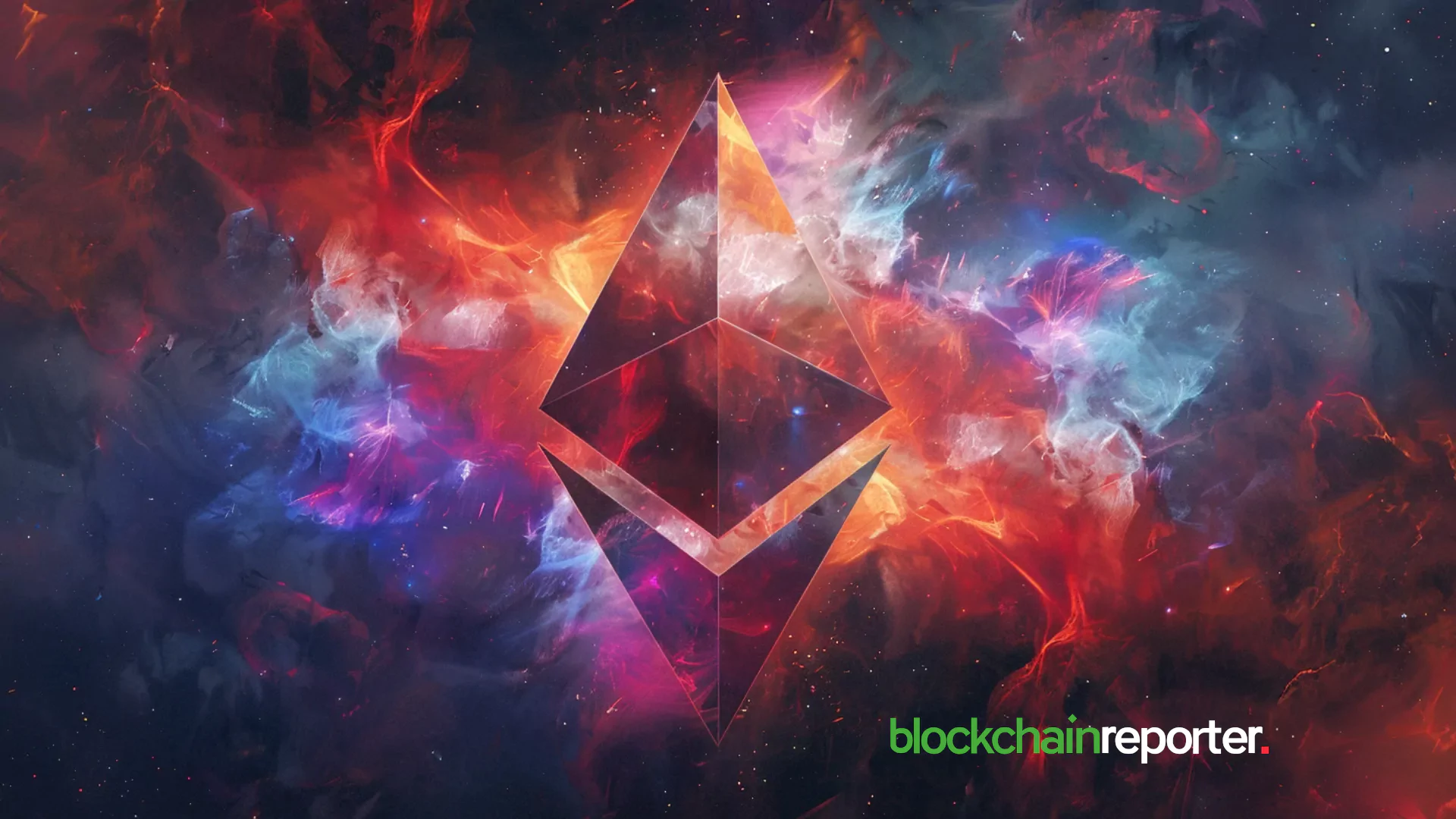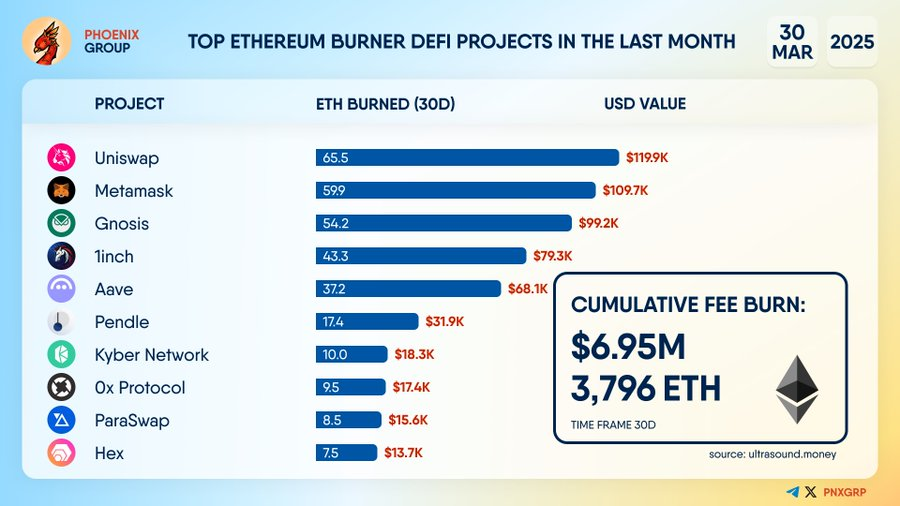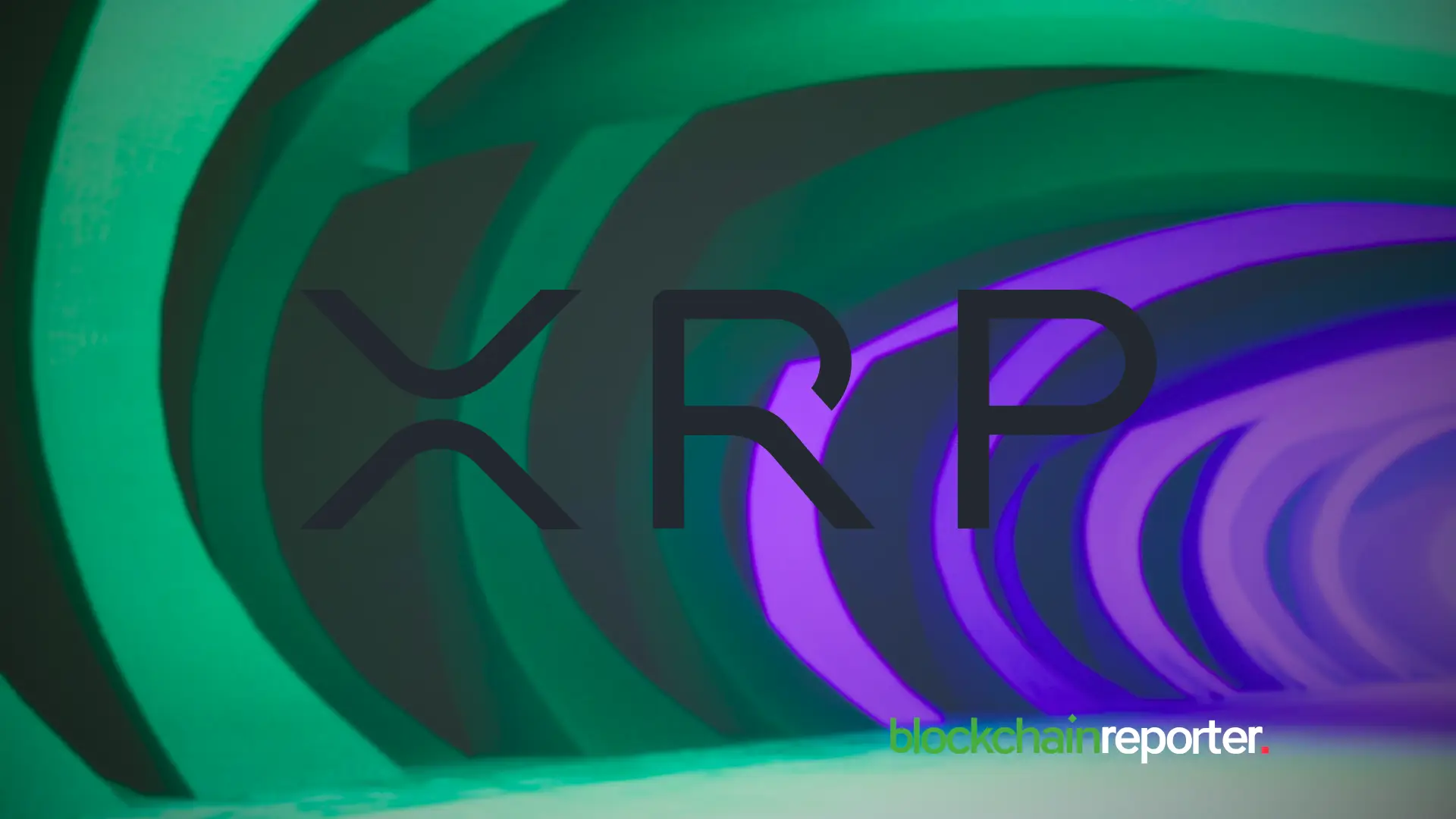Ethereum DeFi Projects Contribute to 1,361 ETH Burn in Just Seven Days



- Defi projects have burned 3,796 ETH in 30 days, illustrating Ethereum’s deflationary trend.
- Uniswap, MetaMask, and Gnosis led the burning activity.
- Mid-tier platforms such as Pendle and Kyber also participated.
Ethereum’s (ETH) deflationary mechanism continues to operate at full strength, driven by active participation from decentralized finance (DeFi) protocols. According to data from Ultrasound.money, more than 3,796 Ether worth $6.95 million has been burned in the last 30 days.
A recent tweet by Phoenix Group shows that major DeFi apps are continually using gas fees, proving that Ethereum is a live network. Uniswap topped the list by having the highest network fee burn of 65.5 Ethereum, equivalent to $119,900. Uniswap is the largest DEX by trading volume, and a high transaction volume means a high quantity of gas is needed.

MetaMask trailing behind with 59 ETH or about $109,700. The increasing utilization of tokens for swapping and bridge operations indicates an uptrend in the number of users. Gnosis is third with 54.2 ETH, amounting to $99,200 being burned.
The increase is attributed to the rising adoption of multi-signature wallets and treasury services. Other major contributors are 1inch and Aave. 1inch eliminated 43.3 ETH ($79,300), and the Aave, 37.2 ETH ($68,100) due to the high demand for lending and service that aggregates several platforms.
Mid-tier Platforms Expand Ethereum Use Cases
Mid-level activity came from Pendle, Kyber Network, and 0x Protocol. Pendle burnt a total of 17.4 Ether, worth 31,900 USD. Kyber was the second highest with 10 ETH ($18,300), while 0x ranked 9.5 ETH ($17,400). These platforms add through services such as yield tokenization and liquidity routing, both of which help demonstrate added value to the DeFi ecosystem.
ParaSwap and Hex closed the chart with 8.5 ETH ($15,600) and 7.5 ETH ($13,700) in fees burned. The data depicts a continued usage in token swap solutions and other specific DeFi ecosystems.
Cumulatively, these various DeFi protocols compromise a large percentage of Ethereum’s total burning rates. With EIP 1559 still active, the decrease in ETH supply through transaction fee burning is beneficial for the Ethereum scarcity theory.
Ethereum’s Long-term Scarcity Strengthens
Despite moderate gas fees, Ethereum has maintained high burn rates due to the ongoing activity in the Ethereum network. Activities such as swapping, bridging, and staking remain to drive high frequency, and ETH out of circulation is dumped as well.
Post-Merge, Ethereum’s reduced issuance paired with the EIP-1559 burn rate, which means that volume is now the primary determinant of supply pressure on Ethereum. This is further supported by DeFi’s continued growth, further demonstrating the base layer’s importance in value exchange.
Despite the emergence of Layer 2 scaling solutions, which facilitate most DeFi transactions, most of them are resolved back to the Ethereum mainnet. This helps maintain deflation in Ethereum, which is realized directly by the existing activities in the DeFi space.

Crypto Market Buzzes as KTA and COMP Lead Today’s Gains
Keeta ($KTA), Compound ($COMP), and Walrus ($WAL) lead significant crypto gains, signalling renewed ...

Crypto Presale Alert – Arctic Pablo Coin Raising The Bar High with 66% APY, Becomes The Top Cryptos to Buy Now Including Ethereum and Polkadot
Discover Arctic Pablo Coin presale excitement and top cryptos to buy now: Ethereum and Polkadot. Don...

XRP Price Prediction for April 1: Is XRP Poised for Recovery or Further Decline?
XRP has dropped 35% in 2025 despite legal progress with the SEC, with $XRP now trading at $2.16, as ...

